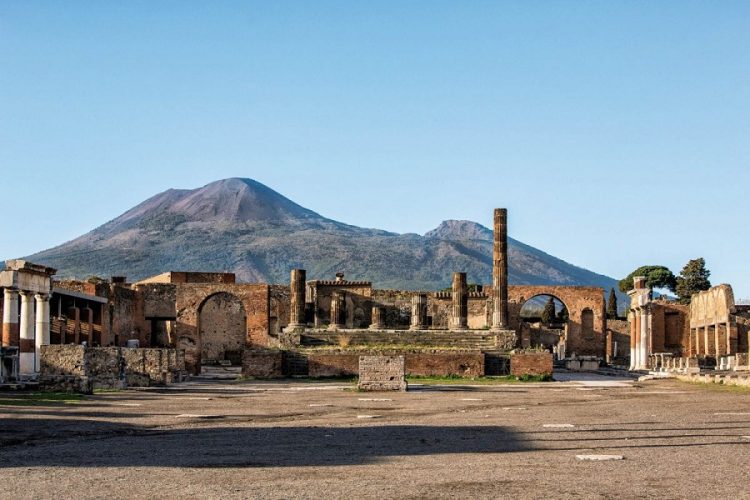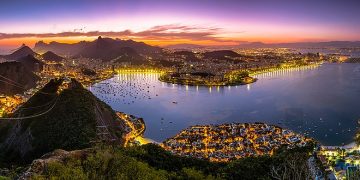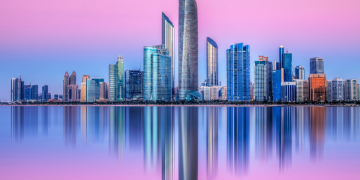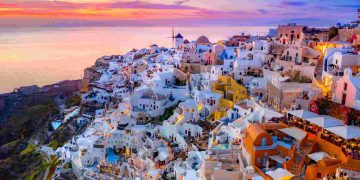Introduction: The Enigmatic City of Pompeii
Pompeii, an ancient Roman city that was buried in volcanic ash from the eruption of Mount Vesuvius in 79 AD, offers an incredible window into the past. It is one of the most significant archaeological sites in the world, where everyday Roman life has been preserved in remarkable detail. Over 2,000 years after its destruction, Pompeii continues to captivate historians, archaeologists, and visitors alike. What secrets does this ancient city hold? What can we learn from its ruins?
In this article, we will explore the history of Pompeii, its culture, architecture, daily life, the catastrophic eruption, and how modern-day archaeologists continue to uncover new knowledge about this extraordinary site.
1. Historical Context: Pompeii’s Rise and Fall
The Founding of Pompeii
Pompeii’s history dates back to at least the 6th century BCE, though it likely existed even earlier. Originally a small settlement, Pompeii grew into a thriving Roman city by the time of the eruption in 79 AD.
- Early History: Initially a settlement of the Osci people, Pompeii came under Greek influence, and later Roman domination.
- Romanization: By the 1st century BCE, Pompeii had fully embraced Roman culture, becoming a bustling urban center with Roman-style streets, houses, temples, and theaters.
Pompeii as a Roman City
At the time of its destruction, Pompeii was a prosperous Roman city with a population of approximately 11,000 to 15,000 people. Its location near the Bay of Naples made it a key trading hub, thriving on agriculture, manufacturing, and commerce.
- The City’s Economy: Pompeii was known for its production of wine, olive oil, and fish sauce, as well as its textile industry.
- Roman Influence: The city was a microcosm of Roman life, with grand villas, public baths, and lavish temples, all built in the characteristic Roman style.
The Eruption of Mount Vesuvius
On the fateful day of August 24, 79 AD, Mount Vesuvius erupted catastrophically, spewing molten lava, ash, and pumice high into the sky. The eruption buried Pompeii under several feet of volcanic ash, and the city was forgotten for over a thousand years.
- The Immediate Impact: The eruption lasted for 18 hours, and the city was completely covered in ash, preserving the buildings, mosaics, frescoes, and even the bodies of its inhabitants.
- The Rediscovery: Pompeii was rediscovered in the 18th century and has since become one of the most important archaeological sites in the world.
2. The Archaeological Significance of Pompeii
Excavation and Preservation Efforts
Since its rediscovery, excavations at Pompeii have revealed a vast amount of information about Roman life. Archaeologists have carefully unearthed homes, shops, public buildings, and even human remains, offering us an unparalleled insight into life during the Roman Empire.
- Early Excavations: Initial excavations in the 18th century were haphazard, but by the 19th and 20th centuries, archaeological techniques had improved significantly, allowing for more careful and methodical digs.
- Modern-Day Preservation: Today, Pompeii is a UNESCO World Heritage site, and significant efforts are being made to preserve and protect the ruins from weathering and over-tourism.
Pompeii’s Role in Understanding Roman Culture
Pompeii offers an unprecedented opportunity to study ancient Roman society. The city’s art, architecture, and daily life have been preserved in extraordinary detail, providing valuable information about Roman culture, society, and customs.
- Social Stratification: Archaeologists have uncovered homes belonging to the elite and the poor, allowing us to understand the social classes of Roman society.
- Public and Private Spaces: The preservation of both public and private spaces (such as baths, theaters, and homes) offers insights into the organization of Roman life.
3. The Architecture of Pompeii: A Glimpse into Roman Urban Planning
City Layout and Infrastructure
The layout of Pompeii reflects the typical Roman urban planning style, with wide streets, impressive public buildings, and an emphasis on function and aesthetics.
- The Streets of Pompeii: The streets of Pompeii were organized in a grid system, with main streets running north to south and east to west. These streets were lined with shops, homes, and public buildings.
- Roads and Sewage Systems: Pompeii had advanced infrastructure, including paved roads, a sewage system, and an elaborate water supply system that included public fountains and baths.
Key Architectural Features of Pompeii
- The Forum: The Forum was the center of political, religious, and commercial life in Pompeii. It was surrounded by important buildings such as the Temple of Jupiter, basilicas, and government offices.
- Temples and Religious Buildings: Pompeii had several temples dedicated to various gods and goddesses, reflecting the religious devotion of its inhabitants. These structures often featured magnificent frescoes and sculptures.
- Theaters: Pompeii’s two theaters, the large theater and the smaller odeon, were important venues for entertainment, including drama, music, and gladiator games.
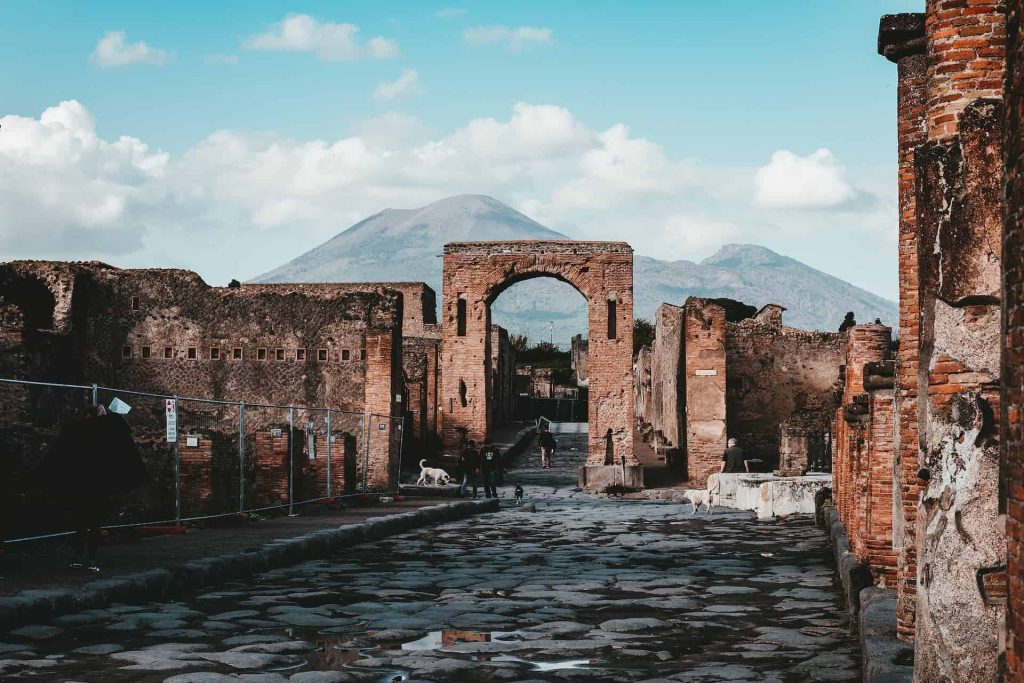
4. Daily Life in Pompeii: What Remains of Ordinary People?
Domestic Life and Residences
Pompeii’s well-preserved homes provide a unique glimpse into the private lives of its inhabitants.
- The Domus: Wealthy residents lived in large homes called domus, which were built around central courtyards and featured beautiful frescoes, mosaics, and furniture.
- Insulae: Lower-class citizens lived in apartment-like buildings known as insulae, often cramped and lacking modern amenities but still furnished with basic furniture and household items.
Public Spaces and Entertainment
In addition to private homes, Pompeii boasted a variety of public spaces that catered to both the elite and working classes.
- Public Baths: The stabilmenta (public baths) were a central part of daily life in Pompeii. These baths featured elaborate systems of heating, pools, and gymnasiums, and served as social gathering places for all classes.
- Markets and Shops: The streets of Pompeii were filled with shops and markets selling everything from food and clothing to pottery and tools. These spaces offer insight into the economic activities that fueled Pompeii’s prosperity.
5. Art and Culture of Pompeii: A Window into Roman Aesthetics
Mosaics and Frescoes
Pompeii’s walls and floors are adorned with frescoes and mosaics that showcase the city’s rich artistic heritage.
- Frescoes: Many homes and public buildings are decorated with detailed frescoes depicting gods, mythological figures, and scenes of daily life. These frescoes provide valuable insight into the values, beliefs, and artistic styles of the time.
- Mosaics: Roman mosaics, often made of small pieces of stone or glass, were used to decorate floors, walls, and public spaces. The House of the Faun is home to one of the most famous mosaics, the Alexander Mosaic, which depicts the battle between Alexander the Great and Darius III.
Sculpture and Decorative Arts
Pompeii’s residents also created sculptures, including busts and statues of gods, emperors, and famous individuals. These works of art showcase the Roman penchant for realism and idealized forms.
- Famous Statues: The Herculaneum Woman and the Dancing Faun are just two examples of famous sculptures found at Pompeii that provide insight into Roman ideals of beauty and virtue.
6. The Tragic Destruction of Pompeii: A Moment Frozen in Time
The Eruption of Mount Vesuvius
On August 24, 79 AD, Mount Vesuvius erupted, burying Pompeii in a thick layer of volcanic ash and preserving it for centuries.
- The Catastrophic Event: The eruption occurred with little warning, and most of the city’s inhabitants were caught off guard. The ash and pumice that fell from the volcano created a thermal blanket that preserved buildings, artwork, and even the remains of the victims.
- The Death of the Inhabitants: Thousands of people perished during the eruption, and their bodies were encased in ash, leaving behind casts that offer a haunting glimpse into their final moments.
The Rediscovery and Excavation of Pompeii
Pompeii remained buried for over 1,500 years before it was rediscovered in 1748. Since then, excavations have revealed an unparalleled amount of information about Roman life.
7. Pompeii in Modern-Day Tourism and Preservation
Pompeii as a UNESCO World Heritage Site
Today, Pompeii is one of the most visited archaeological sites in the world. As a UNESCO World Heritage Site, it is protected and preserved for future generations.
- Tourism: Visitors flock to Pompeii from all corners of the world to witness the ruins and learn about the ancient city’s culture and history. The site continues to offer incredible insights into the daily lives of the people who lived there before the eruption.
- Ongoing Excavations: Archaeologists continue to uncover new areas of Pompeii, revealing fresh insights into Roman life. Recent advancements in technology, including ground-penetrating radar and 3D scanning, are helping preserve Pompeii and its treasures.
Conclusion: What Pompeii Teaches Us About History and Humanity
Pompeii is much more than a site of ancient ruins; it is a profound testament to the resilience of human culture and the fleeting nature of life. Through its preserved buildings, artwork, and everyday items, Pompeii provides us with a glimpse into the lives of people who lived over two millennia ago. The tragic eruption that destroyed the city also preserved it for posterity, allowing modern-day visitors to learn from the past in ways that few other archaeological sites can offer.
What we can learn from Pompeii is not just a glimpse into ancient architecture or Roman life, but also the universality of human experience—the joys, struggles, and fleeting nature of time. In the ashes of Pompeii, we find a lesson about the fragility of life and the enduring legacy of human creativity, innovation, and resilience.


